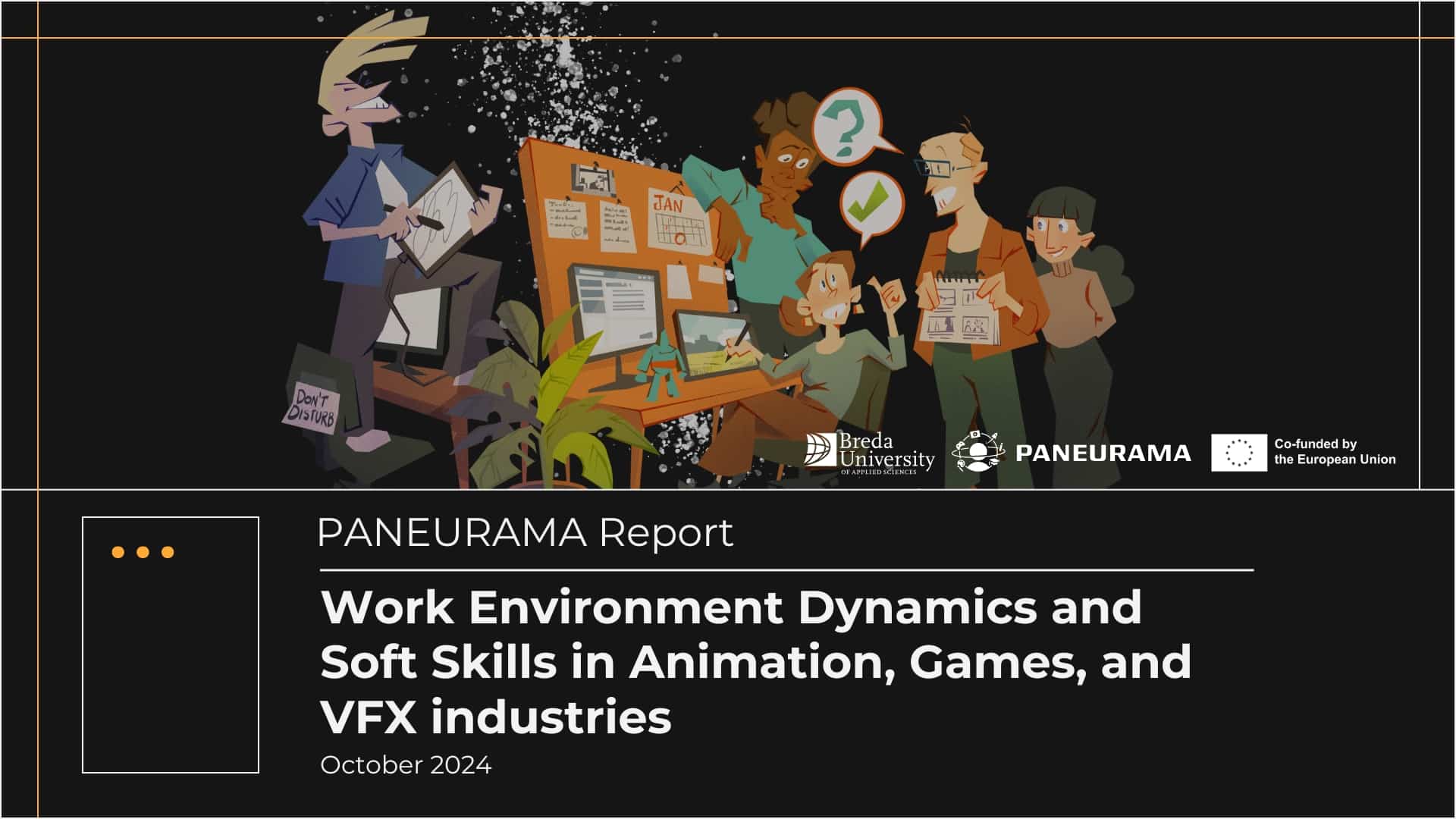We asked our team from the PANEURAMA project to briefly introduce themselves, share the areas they are working on, and respond to some questions addressing current challenges and opportunities in the industry.
We hope you will enjoy reading their insights. The interviewee is Viktória Szabó from Moholy-Nagy University of Art and Design Budapest.

Viktória Szabó
Head of Program, Animation MA
@Moholy-Nagy University of Art and Design
Q: Can you provide a brief overview of yourself, your professional experience, and the institution you work in?
I started my career in film distribution through which I gained experience in the film industry. Later I changed sides and worked in film production. My main interest was documentaries. I was fascinated by how creative this genre has become in the past decade and how innovatively it uses creative technologies. Exploring these technologies led me to animation and immersive media.
The Animation Department of Moholy-Nagy University of Art and Design is dedicated to supporting young talents with unique voices. It is an incubator which allows students to explore the possibilities of animation and develop their stories. We support all sorts of formats that aim to expand the borders of narrative arts.
Q: In recent years, what do you consider the most significant changes within creative digital education? How has it affected your institution? Could you give some examples?
The biggest challenge was to come back from online education to at least a hybrid format. Unlike at science universities the lockdowns – I believe – hit design universities harder. It’s not only about access to tools but also in our case the very personal mentoring and teamwork.
We have always had a strong connection with our students and they have to work closely together, otherwise finishing their graduation project becomes nearly impossible. After COVID, we had to build up our community again and reshape classwork. I realised that we need to give more time and space to students to meet and spend time together.
Q: What, in your opinion, are the primary challenges currently faced by creative digital education and how is it affecting your institution? Could you give some examples?
AI technologies are reshaping the structure of the creative industries these days. On one hand, it is exciting to observe this phenomenon and join the game, on the other, universities have to take it seriously and work out how they can stay competitive in this extremely fast shift. If education can not respond to this challenge the creative industries will have a significantly different structure in a short period of time.
Q: Could you please identify the most significant opportunities for creative digital education and possible ways to address them?
My main interest these days is how to implement AI tools in my teaching practice. It could seem easy to work with image generators and also it is a playful process but if students want to use it for their daily work they have to learn how to use communication as a design tool. This is I think where a university and education can jump in but only if it has a strategy for it. I do not think that there is a universal strategy, every school has to develop their own approach suited best for the students.
Q: What do you think are the most important hard skills in the area of creative digital education in which you are working?
In animation, the most important hard skills have not really changed in the past decade. These are storytelling skills, drawing skills, and software skills. In terms of software, the role of 3D programs and game engines became more significant. Every year, more and more students want to learn and use these tools.
Q: What advice could you give to industry professionals to foster closer collaboration and partnership with educational institutions? Could you share some examples?
It could be beneficial for both parties if they start a collaboration on early-stage or research-level projects. Universities – teachers and students – have a lot of creative energy and unique vision that can be beneficial for industry professionals. Research-level projects can give enough freedom to students to experiment and industry players to find ideas they would never meet with.
Q: What do you think creative digital educational institutions should focus more on to better prepare young artists for their careers?
Bringing together students and the industry is essential. If students could experience the professional environment early on, they would be better prepared when they start their careers. This is one of the reasons why collaborations are important.
University is a safe space, it supports students’ ideas and creativity on a high level. Which is not always the case on the professional level. We organise many events where our students can present their portfolios directly to industry representatives. We get a lot of positive feedback from both sides. Students can learn what are the industry requirements and companies can get direct access to young talents.
Q: What do you think are the most important soft skills needed for students and graduates who are going to work in creative digital industries? Could you give some advice on how to develop them?
The most important soft skills are communication, collaboration, critical thinking and creativity. Students need all of these when they enter the national or international scene or start to work on projects where there are many talented collaborators.
These skills can be developed through collaborative and project-based learning. Mentoring and one-on-one consultations also help a lot in learning how to adapt feedback and react to criticism.
Q: Could you provide suggestions or recommendations for students and graduates aiming to succeed in the current market?
Don’t be afraid to experiment.
I think our times taught us that nothing is certain, we have to recalculate quite often. The key factor of resilience is the ability to adapt to new setups. This seems to be an abstract idea, but if you take a closer look you learn that many creators become successful because they implemented a new tool or platform very early on.
Therefore always keep your eyes open. And never stop playing.

